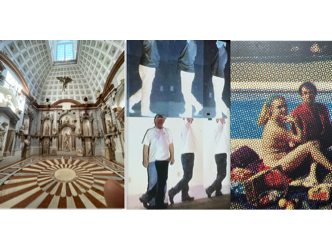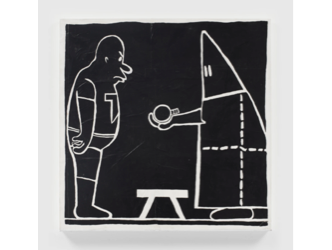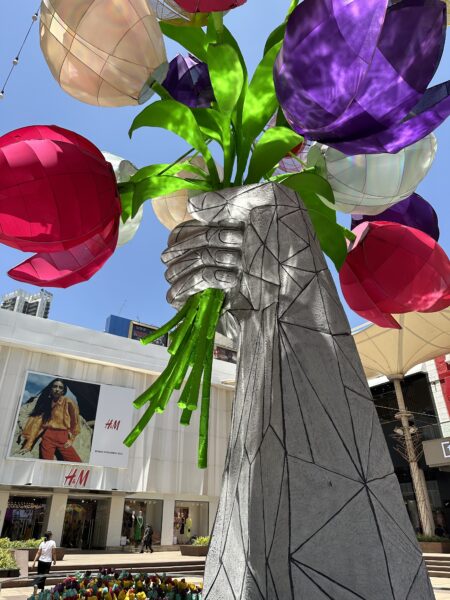
In a shopping mall, in Mumbai, a copy of the Jeff Koons sculpture “Bouquet of Tulips”
Big numbers

Mukesh Ambani
The Indian Ambani family is famous for various reasons. Firstly due to the father, Mukesh, an astute businessman who is largely responsible for growing his own father’s textile business, to the point of turning it into a telecommunications empire, among other things. Ambani is currently synonymous with big numbers. These days he’s ranked by Forbes as having the second highest fortune in India and the ninth in the world, with a net worth of 83.7 billion dollars. The marriage of his daughter Isha in 2018 involved a series of ceremonies that received a lot of media coverage, costing 100 million dollars.
The Ambani’s tower
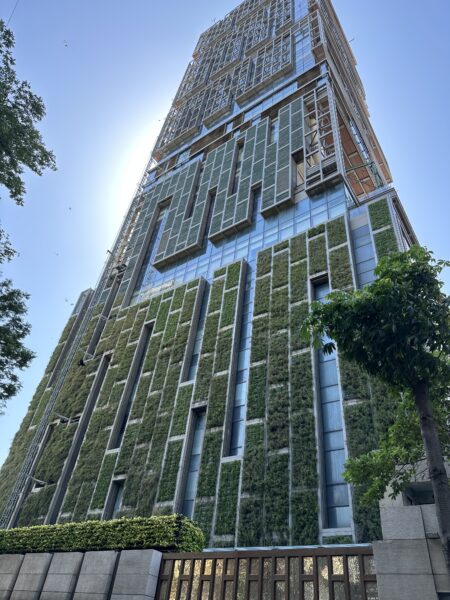
The Ambani private tower
In Mumbai the family has made their mark on the urban skyline with the tower they’ve built, apparently occupied by five people (along with an army of domestic staff, of course), with 27 floors, 29 bedrooms, 3 swimming pools, cinema, theatre etc… It’s like a private, vertical city. A new kind of “Cité radieuse” in the style of Le Corbusier, only conceived for a single family. This home contains international art, starting at the entrance to the building with a monumental LOVE by the American artist Robert Indiana.
NMACC
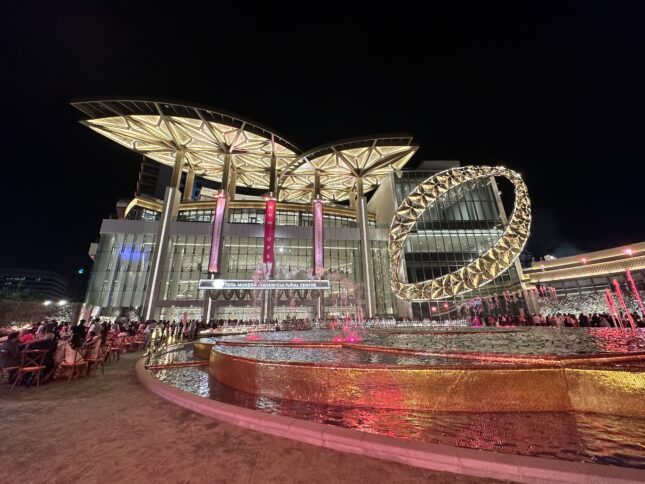
NMACC
Nonetheless, the Ambanis don’t move in the artistic circles of Mumbai. So they never go to galleries. However, it was on Nita’s initiative that a cultural centre has been created in Mumbai called the NMACC (Nita Mukesh Ambani Cultural Center), inaugurated on 31 March. I wanted to see what’s going on in the arts in this part of the world, outside of the Kochi Biennale (See here and here a report about the Kochi Biennale). So I paid a visit.
Former Indian classical dancer
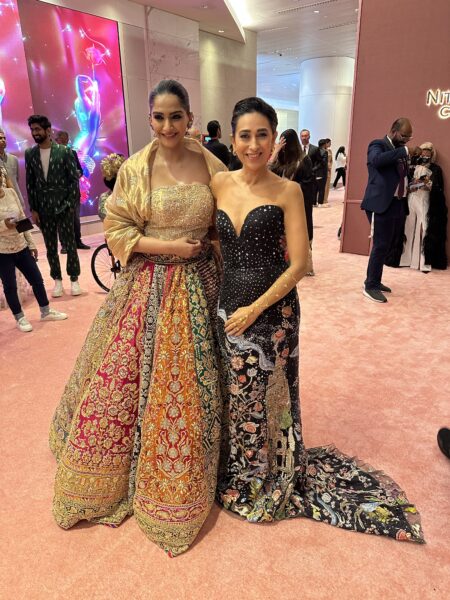
Sonam Kapoor, Karisma Kapoor
The first thing to observe is that, for the Ambanis, the visual arts are not the favoured form of creation. This is primarily because Nita is a former Indian classical dancer of Bharatnatyam (a dance from Tamil Nadu). Numbers talk here, too. The NMACC is housed across 73,000m2 in its entirety, featuring among other things a garden with a monumental fountain measuring 34 metres in diameter, a large 2000-seat theatre, a smaller 250-seat theatre, a third that is more intimate and can accommodate 125 people, a general exhibition room or convention centre measuring 5000m2, and lastly a space known as the Art House spread across four floors and covering just 1600m2.
Richard Gluckman
It is this space, the smallest in the whole complex, that is reserved for the NMACC’s first exhibition of contemporary art. However, the Ambanis are taking their involvement to the limit. So it’s the famous New York architect Richard Gluckman, a great specialist in designing museums in the United States, who has conceived these spaces that stretch across four floors, with the perfect conditions to display art according to international standards, which clearly don’t exist anywhere else in Mumbai outside the art galleries.
A long series of festivities
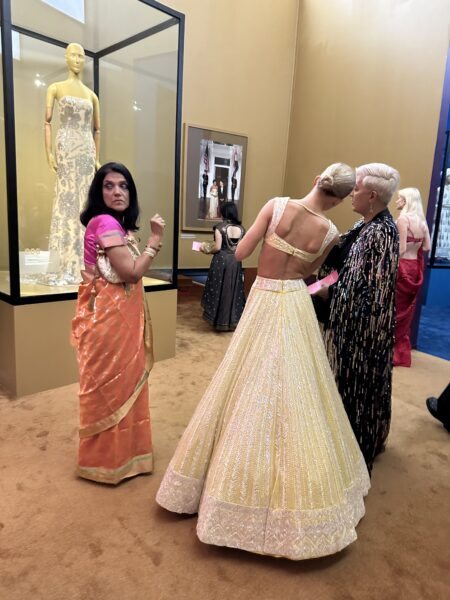
The opening of India in Fashion, NMACC
But at the inauguration of the complex, the opening of the Art House only took place at the end of a long series of festivities, an extraordinary display of splendour and exuberance with the air of an Indian wedding.
Bollywood musical
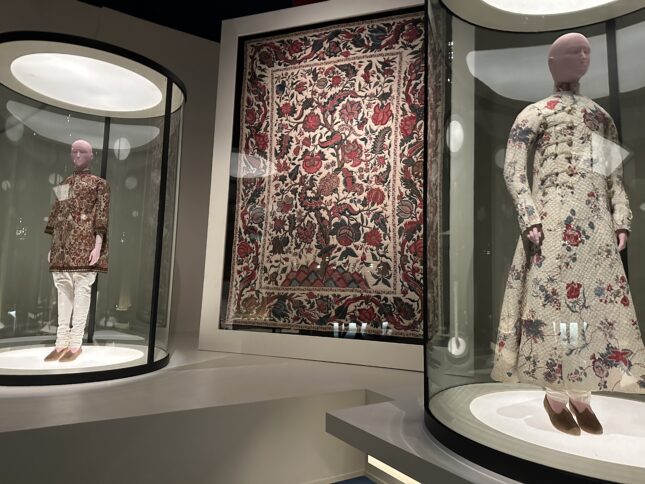
India In Fashion, NMACC
On Friday night there was the performance, for the first time, of a musical comedy produced by the Ambanis, “Civilization to Nation”. The history of India was told over one and a half hours with 350 participants on stage, 1100 costumes and 55 musicians. “It’s India’s biggest musical ever,” reads the show’s presentation text.
Nita Ambani herself
The climax of the evening was the appearance of Nita Ambani herself in the role of a divinity. The evening of the next day involved inaugurating the gigantic exhibition dedicated to India’s influence on fashion, curated by the British great specialist, living in America, Hamish Bowles. It was very impressive, with pieces on loan from around the world. 145 models were presented. The setting was enchanting.
Rooshad Shroff
The architect Rooshad Shroff also designed the layout, with references to Indian architecture. It can be clearly perceived how India was first a large producer of textiles before becoming the subject of inspiration for forms of clothing such as saris, for example. The Saturday evening inauguration was followed by a dinner. Exuberance, richness, abundance… The dresses of Indian women with their jewels passing by those of Bollywood or Hollywood stars, these festivities were like a series of fireworks.

Ranjani Shettar
But we still hadn’t seen the art exhibition, access to which was prohibited, even to journalists…
Cutting the ribbon, finally
The appointment was made the next day, at midday sharp, for the visit to the Art House. Again, we had to wait a little longer. The site’s owners didn’t arrive until two o’clock in the afternoon to carry out the gesture allowing access to the rooms: cutting the ribbon. The relatively modest exhibition, composed of 10 Indian and international artists, is curated by American gallerist Jeffrey Deitch, former director of Moca (who did not wish to be interviewed) and the famous poet Ranjit Hoshkote.
Ranjit Hoskote
“We want to celebrate all forms of cultural encounters,” explains the latter. He gives the example of Kerala native Ratheesh T (born in 1980) who paints intimate scenes from daily life in a figurative style, inspired according to Hoskote by the Western old masters.
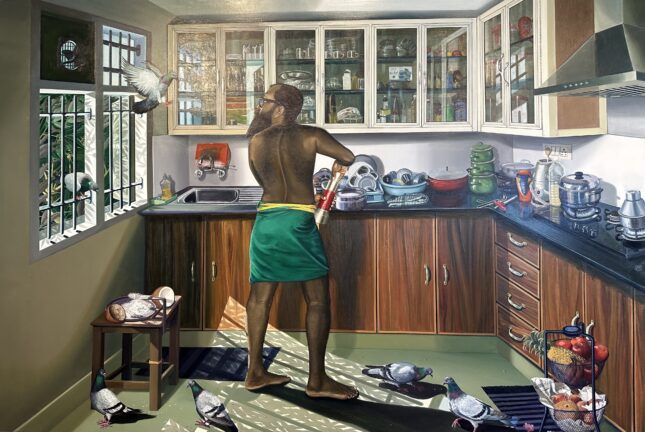
Ratheesh T
Ratheesh T is at the same time the subject of an exhibition at Mumbai’s Mirchandani+ Steinruecke gallery until 20 May. Two monumental paintings by the German artist who lives in France, Anselm Kiefer (born in 1945) are also on display. Hoshkote points out in the exhibition catalogue that when Kiefer visited the north of India he was struck by the sight of bricklayers with their cubes of earth drying in the sun, which we find in his 2009 canvas, “The Fertile Crescent” (See here an interview of Anselm Kiefer in his studio).
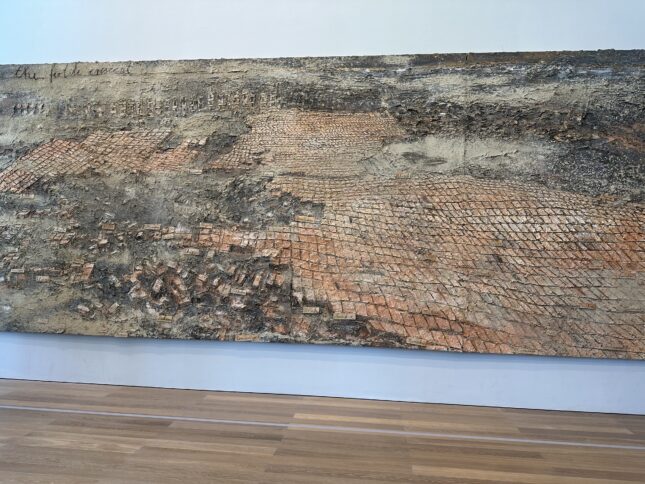
Anselm Kiefer
Francesco Clemente
The Italian American painter Francesco Clemente (born in 1952) also made the journey to Mumbai. “The colours of India are red, white and black.” His powerful paintings are on display at the NMACC. “People talk about India as a place of transformation,” explains the artist.
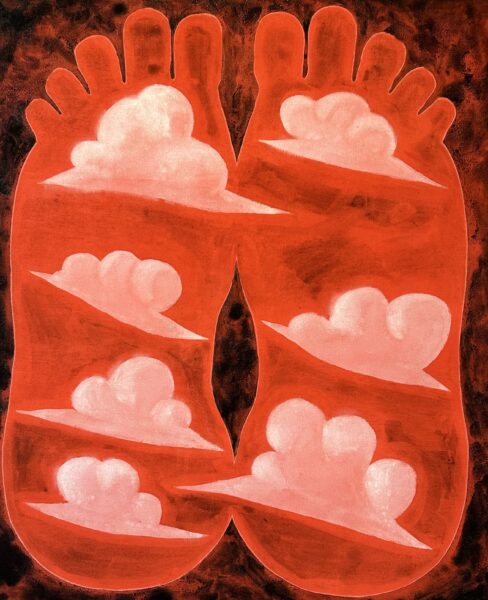
Francesco Clemente
“I came for the first time when I was 19 years old and did so regularly up until the Covid period. Since 2019, I’ve been counting down the minutes until my return today,” he reveals, happy to be back (See here an other interview of Francesco Clemente).
Bharti Kher
Bharti Kher, one of the most famous Indian artists, is also part of the inaugural exhibition. Her most impactful work, dating from 2009, is the depiction of a whale heart, “the largest heart in the world”, covered in bindis (the coloured dots Hindus wear on their foreheads). Placed on a network of roots, which are in fact vessels, the giant heart resembles a tree, a secular olive tree. “The bindi represents the third eye. And the third eye is the place of awareness,” explains Bharti.
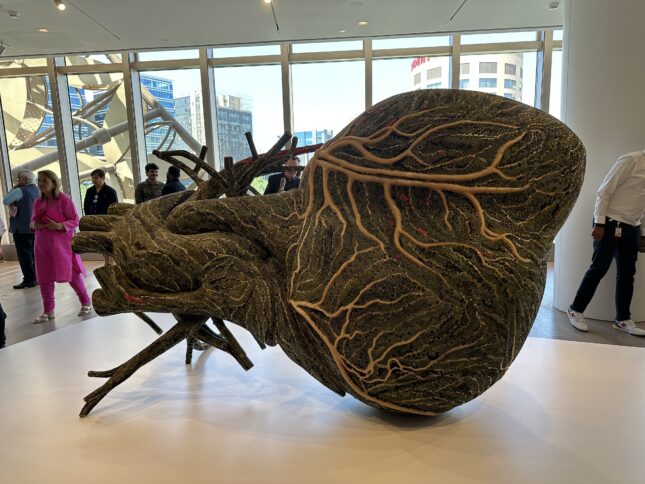
Bharti Kher
Hans Ulrich Obrist
As a whole, the exhibition doesn’t show much formal cohesion. It cannot be said to be impressive. However, Hans Ulrich Obrist, director of the Serpentine gallery in London, along with Jessica Morgan, director of the Dia Art Foundation in New York, are on the cultural institute’s artistic board. These seasoned professionals, daring in their respective artistic programmes, look set to provide a positive stimulus for the next stage of the story of contemporary art in Mumbai (See here an other interview of Hans Ulrich Obrist).
A new artistic standard
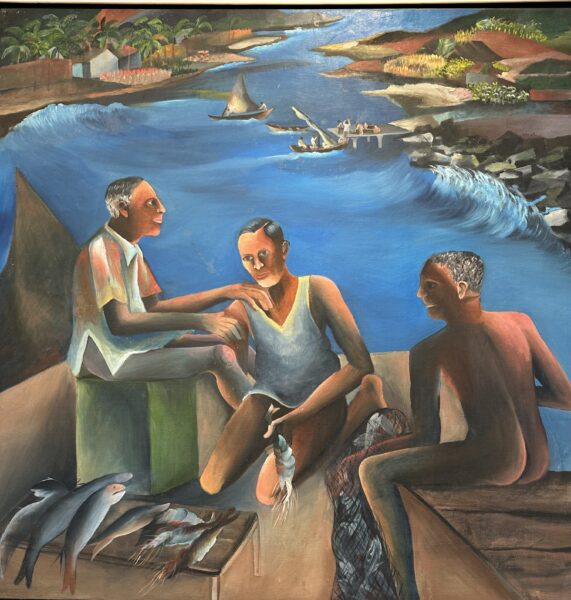
Bhupen Khakhar
One of the local art figures concluded after the visit: “Although the exhibition is small, now a new artistic standard has been established in India. Its been cruelly lacking until now.” Nothing has been announced yet for the rest of the programme, which is being organized by Isha Ambani until 2025, probably calling on the services of different curators from around the world.
Doug Aitken, Jeff Koons

Nita Ambani, Jeff Koons
However, the artist Doug Aitken seems to have been chosen to be part of the programme soon. We imagine that Jeff Koons, who also made the trip specially to Mumbai, could also soon be an exhibitor at the NMACC.
Kiran Nadar
In the meantime, Indian collectors are waking up. In Delhi, the influential Kiran Nadar is planning a museum due to open at the beginning of 2025. The building, designed by famous architect David Adjaye, will be unveiled to coincide with the vernissage of the next Venice Architecture Biennale in May 2023.
Support independent news on art.
Your contribution : Make a monthly commitment to support JB Reports or a one off contribution as and when you feel like it. Choose the option that suits you best.
Need to cancel a recurring donation? Please go here.
The donation is considered to be a subscription for a fee set by the donor and for a duration also set by the donor.


